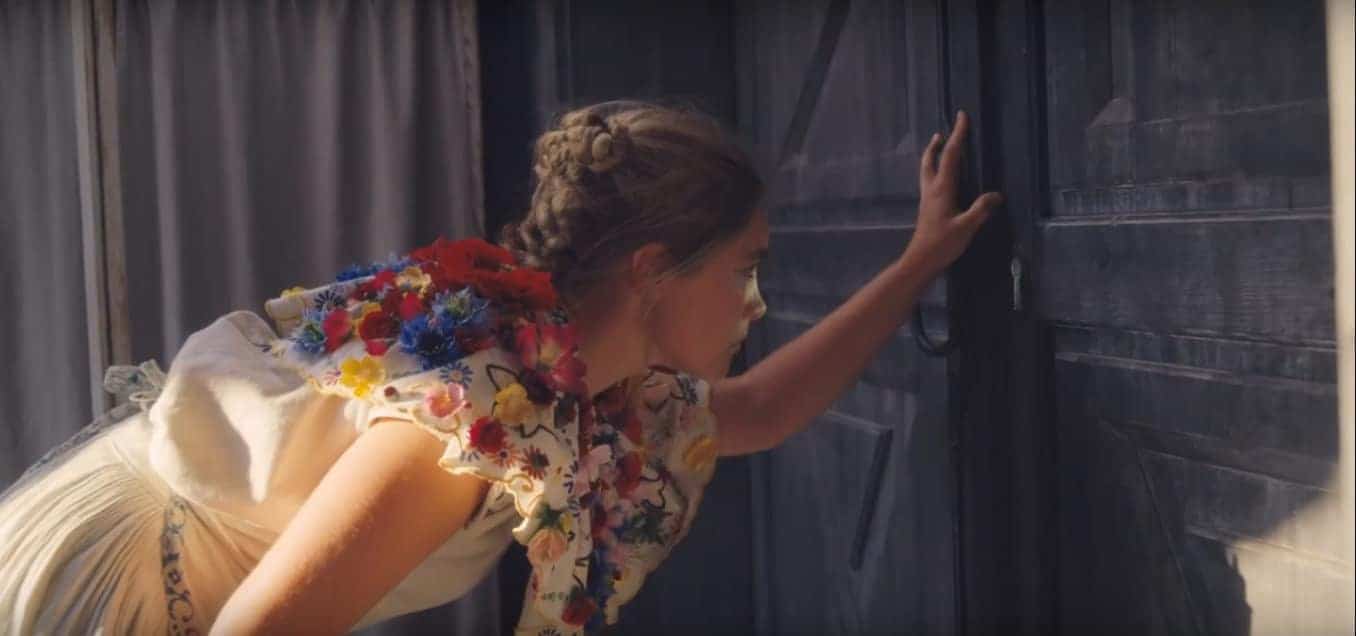
Last year, director Ari Aster arrived with his dread-inducing debut feature, Hereditary. The film received wide acclaim and showcased the enormous talent of star Toni Collette in a story that balances occult horror with family trauma. Steadily riding its success, Aster returns to theaters this summer with his sophomore picture, Midsommar. Centered on a couple who attends a festival that occurs once every 90 years, the film appears to be the aesthetic antithesis of his first feature but still evokes the same terror-laden atmosphere. Following a film like Hereditary may prove a challenge, but Midsommar looks like it will be a unique experience, one that will continue to bolster the young director’s growing filmography.
Partnering again with A24 for this “Scandinavian folk horror,” Aster will likely avoid the sophomore slump and come to find similar favor to what he achieved with his previous effort. Midsommar looks and feels like a very different horror film than Hereditary, exchanging a mother’s trauma for a fervent survivalist core as star Florence Pugh participates in a deadly festival and the various rituals and ceremonies of its practice.
Midsommar also has its visual element to separate itself from the macabre darkness of Hereditary. The aesthetic of the new film seems to work in juxtaposition with its terrifying, likely torturous story. The visuals are completely saturated with pastels and bright colors that evoke a softness in contrast to the density of Hereditary’s haunting pallet. Midsommar gives off the vibe that the film was captured with layers of Instagram filters over the frame, highlighting its effervescent hues. But even if the exterior of the film looks brighter, its heart is bound to be just as warped with occultist tones.
There is also a sense with Midsommar that Aster is still toying with the rituals and practices of sects and cults, much like Hereditary. But here, the scope is broader. Instead of unleashing horror onto a family, Midsommar will position the audience alongside Pugh’s character, Dani, as the festivities begin. In the trailer for the film, the camera forces the audience to take the perspective of a sedated participant looking onto another who is saying, “You can’t speak, you can’t move, but this opens you up to the influence and it breaks down your defenses. Trust me, all right? You’re going to love it.”
With the eerie, brightly-colored trailer, Aster invites audiences not to simply bear witness to turmoil and trauma but to actively participate in the festival. This can make Midsommar all the more intriguing as an experience for those who weren’t interested in Hereditary. There’s an ambiguity to the concept so, much like Pugh in the last few seconds of the trailer, the audience is peering through a crack in the door to glean more information and find out what’s in store for them.
Aster also has an element of surprise with his second film. Hereditary shocks not only with its visceral horror but with the twists and turns that its story takes. A seemingly straightforward narrative following the horror of the aftermath of a matriarch’s death, Hereditary exceeded expectations in terms of the surprises and escalating horror the film has in store for its characters. With Midsommar, the expectation for surprises should be no different. With the trailer presenting such a strange and resplendent film, the images act almost as a ruse for the absolute carnage to follow. Anything could happen in Midsommar and audiences should prepare, especially after Hereditary, for turns and twists to be taken at a moments notice.
Aster re-teams with Hereditary editor Lucian Johnston and cinematographer Pawel Pogorzelski for this next effort to tackle Midsommar‘s distinct look in its visual elements, cinematography, and editing. With the positive results of their first collaboration, and based on what we’ve seen in the trailer, the Aster, Pogorzelski, and Johnston team will likely be a similar achievement here. The director will also call upon other influences to develop the horror of Midsommar, including Black Narcissus (1947), Hard to Be a God (2013), Macbeth (1971), and Tess (1979). Delving deep into fanaticism, agitation, and compulsory behavior, Aster’s second feature will draw on these specific films with regards to their visual style. Each harnesses naturalism and striking images in specific ways that heighten the tone and becomes synonymous with their titles.
Aster pulling from these films means the visual cues will likely feature haunting bodily contortions juxtaposed by stunning, saturated landscapes. With these titles to draw on for a visual pallet, Aster will render horrors that lift the veil of ambiguity for something far more sinister, troubling, and gory than Hereditary. Using this ambiguity to his advantage, Midsommar is a draw for horror fans and followers of the director alike. Described as “The Wizard of Oz for perverts,” discretion is Aster’s best asset before pulling the curtain back to reveal the hell-scape of his next feature.
With Midsommar, Aster seems poised to avert the sophomore slump with a film that still plays to the director’s strengths but provides a new scope visually and tonally. Still dabbling in the world of cults and various sects, Aster broadens the scope of Hereditary by exchanging a family’s continued suffering for unwitting young peoples’ naivety. Although the film is visually bright and saturated, its story will be darker, more twisted, and devilishly fun. Don your flower crown, the festivities begin July 3rd.
Related Topics: Ari Aster, Florence Pugh, Hereditary, Midsommar
